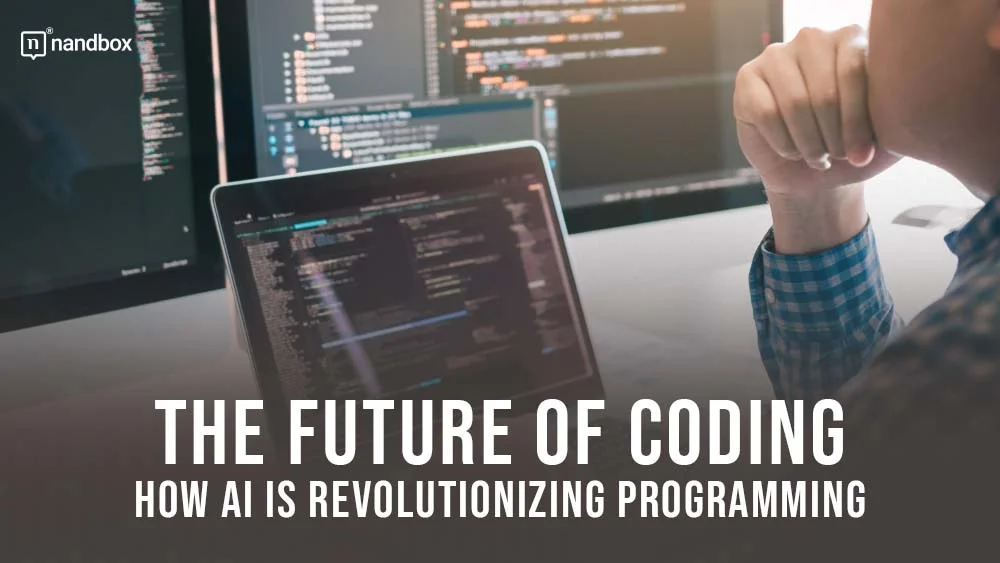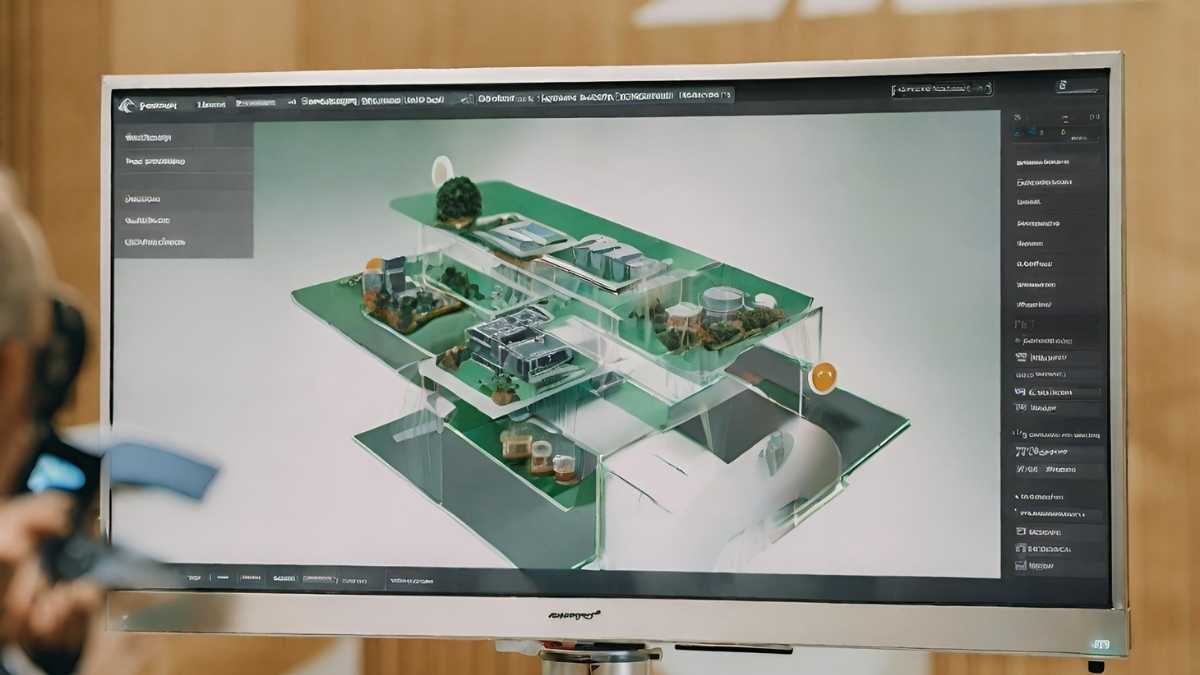Integrated technologies combine multiple systems or processes to enhance efficiency or functionality. They often incorporate hardware, software, and services as a solution.
In our fast-paced digital world, businesses and industries rapidly adopt integrated technologies to streamline operations and gain competitive advantages. This harmonious blend of technology spans various domains, including computing, communication, and automation, fostering innovative solutions that address complex challenges.
Enterprises leverage these integrated systems to facilitate seamless workflows, improve data management, and enhance customer experiences. Whether it’s through the Internet of Things (IoT) devices, smart infrastructure, or cloud services, the fusion of these technologies propels advancements in efficiency and productivity. As we continue to evolve in the digital era, the importance of integrated technologies in achieving operational excellence and sustainability cannot be overstated, making it a pivotal aspect of modern strategy.

Credit: nandbox.com
Integrated Technologies
Integrated technologies refer to the seamless combination of multiple systems and tools to enhance functionality and efficiency. They enable smoother workflows and data sharing across platforms, boosting productivity and innovation.
In today’s digital landscape, seamless integration is the heartbeat of modern technology ecosystems. Understanding integrated technologies is your golden ticket to harnessing the power of streamlined systems and catapulting your operations into a realm of unmatched efficiency. Let’s dive into what constitutes integrated technologies and why they are pivotal for contemporary business success.
What Are Integrated Technologies?
At the core of every connected system or application, integrated technologies are the glue that binds disparate pieces of software and hardware into a cohesive unit. This harmonization enables data and processes to flow smoothly, fostering improved productivity and decision-making capabilities.
The concept revolves around synergistic combinations where the sum is far greater than its individual components.
Benefits Of Integrated Technologies
- Enhanced Efficiency: By removing data siloes and fostering real-time information access, integrated solutions dramatically streamline workflows.
- Better Data Analysis: Gathering data from different sources becomes straightforward, facilitating deeper insights and more informed strategic decisions.
- Cost Savings: Over time, the initial investment in integrated technologies often translates into substantial cost reductions due to optimized resource deployment and lower operational expenses.
A prime example of integration in action is the use of a CRM system that communicates seamlessly with an email marketing platform, enabling marketers to tailor campaigns based on customer interactions and preferences.
Real-world Applications Of Integrated Technologies
Integrated systems are the unsung heroes in a myriad of sectors. Whether it’s retail giants leveraging omnichannel strategies to provide a unified shopping experience, or healthcare providers utilizing integrated platforms for patient data management, the applications are boundless. Here are a few standouts:
- Smart homes that adjust to your preferences automatically, from the temperature to the lighting, thanks to interconnected IoT devices.
- Collaborative work environments that thrive on platforms allow team members to communicate, share files, and manage projects without switching between applications.
- Manufacturing facilities where integrated supply chain solutions predict demand, adjust production schedules and optimize inventory levels in real time.
Challenges Of Integrating Technologies
While the benefits of integration are clear, achieving a harmonious system is not without its hurdles. Complex landscapes with legacy systems, different data formats, and varying standards can present significant challenges, including:
- Compatibility Issues: Finding a way to make new technologies work with existing systems can be a complex task.
- Data Security: As systems become more interconnected, safeguarding sensitive information becomes increasingly critical.
- Required Expertise: Implementation often necessitates a high level of technical knowledge and change management skills.
A conscious effort to anticipate and mitigate these challenges is integral to the successful deployment of integrated technologies.
Looking Ahead: The Future Of Integrated Technologies
Imagine a world where devices, systems, and applications operate in perfect unity, creating an environment where interaction is as natural as a conversation between friends. This is the direction in which technology is advancing. Emerging trends such as artificial intelligence, machine learning, and blockchain will only catapult the capabilities of integrated systems to new heights.
As these technologies converge, expect to see even more personalized, efficient, and secure experiences across all walks of life.
Fostering a deep understanding of integrated technologies is not just a strategic move, but a necessity to thrive in an interconnected world. By embracing these systems, businesses position themselves at the forefront of innovation, ready to deliver exceptional value to their customers.
Education Context

Integrated technologies in education refer to the seamless incorporation of digital tools that enhance learning experiences. These advancements foster interactive classrooms, enabling real-time feedback and collaborative learning opportunities for students and educators alike.
The Revolution Of Learning Through Integrated Technologies
In the realm of education, integrated technologies have revolutionized how instruction is delivered and how students engage with material. Smart tools and platforms enable personalized learning experiences, making education more accessible and efficient.
Blending Traditional And Digital Learning
- Traditional classroom settings: These often follow a teacher-centered approach with lectures and textbooks as the primary sources of information.
- Digital learning platforms: Provide interactive and engaging content that supports various learning styles and enhances student understanding.
Enhanced Collaboration And Interactivity
The advent of integrated technologies in education has led to new heights of collaboration among students and educators. Tools like virtual whiteboards and online forums allow users to share ideas and work together seamlessly, regardless of their physical location. This digital bonding goes beyond geographical boundaries, fostering a global learning community.
Accessibility And Inclusivity
- Learners with disabilities: Assistive technologies embedded within educational systems can provide equal opportunities for all students to access learning materials.
- Remote areas: Technology integration helps bridge the educational divide, reaching students in locations previously underserved or inaccessible.
The Power Of Real-time Feedback
Access to immediate feedback is perhaps one of the most transformative aspects of integrated technologies in education. Students can receive instant responses to queries and assessments, allowing for a more dynamic and adaptive learning process. This immediacy helps maintain engagement and accelerates the learning curve.
Preparing Students For A Digital Future
- Skill development: Integrated technologies cultivate digital literacy skills that are crucial in today’s job market.
- Future-oriented education: Equips students with the ability to adapt to ever-evolving tech landscapes and prepares them for future challenges and opportunities.
The Role Of Data In Personalized Education
Sophisticated data analytics embedded in educational technologies pave the way for tailored learning experiences. By analyzing student performance and learning habits, educators can customize their teaching strategies to suit individual needs, thereby enhancing the overall educational outcome.
Limitless Resources At Your Fingertips
The wealth of resources available through integrated technologies is unparalleled. Students can explore a myriad of educational materials, from ebooks and podcasts to interactive simulations, all designed to complement different learning modalities and interests. This abundance creates a rich and diversified learning environment.
Encouraging Student Ownership And Agency
Integrated technologies empower students to take control of their learning journey. With access to various tools and resources, learners can self-direct their education, explore subjects of interest at their own pace, and develop critical thinking and problem-solving skills.
The Eco-friendly Shift In Education
- Paperless learning: Reduces the environmental impact traditionally associated with education by minimizing the need for physical materials.
- Energy-efficient devices: Schools and institutions are turning towards greener technologies, contributing to a more sustainable future.
Secure, Safe Learning Environments
Security and privacy are taken to the next level with integrated technologies in education. Robust systems are in place to protect student data, while digital monitoring tools ensure a safe online learning environment, fostering trust and peace of mind for both students and educators.
Classroom Applications
Integrated technologies in classrooms empower educators to combine various digital tools, enhancing students’ learning experiences. These applications facilitate interactive lessons, real-time feedback, and personalized learning paths, preparing students for a tech-savvy future.
The seamless integration of technologies into classrooms has revolutionized the way educators teach and students learn. By weaving together various digital tools and platforms, educators can create an interactive and dynamic learning environment. Let’s delve into the practical applications of these integrated technologies within the classroom setting.
Interactive Whiteboards Enhance Learning Engagement
Gone are the days of chalk and talk. Interactive whiteboards have become a game-changer in promoting student engagement. These tools allow teachers to present multimedia content that can be manipulated directly on the screen, providing a tactile learning experience that caters to various learning styles.
Whether by navigating through interactive maps or solving equations right on the board, students gain a hands-on approach to learning that deepens their understanding of the material.
Virtual Reality Opens New Educational Horizons
- Immersive Learning Experiences: By donning VR headsets, students can be transported to different worlds – be it a historical site or the depths of space, making abstract concepts tangible.
- Fostering Empathy and Cultural Awareness: Virtual reality enables students to experience life from different perspectives, promoting empathy and cross-cultural understanding through vivid simulations.
Collaborative Learning With Cloud Computing
Cloud-based platforms have taken collaboration to a new level. Students are no longer bound to the physical classroom; instead, they can work together on projects and assignments anytime, anywhere. These environments encourage the development of communication skills, teamwork, and digital literacy, which are essential in the modern digital-oriented workplace.
Gamification Stimulates Motivation And Mastery
- Reward-based Learning: By integrating game design elements in educational activities, students can master subjects through the attainment of badges, points, or levels, which bolster their motivation to learn.
- Personalized Learning Paths: Gamification also allows for the tailoring of learning experiences to individual student needs, supporting self-paced progression and ensuring that each student can thrive.
Data Analytics Guides Personalized Education
Utilizing data analytics, educators can gain insights into student performance and learning habits. This informed approach helps in customizing lessons and materials to better meet the needs of each student, ensuring that no one is left behind. Through the analysis of this data, teachers can make informed decisions that directly impact and improve student outcomes.
By harnessing the power of integrated technologies in classroom applications, educators are not just teaching but also inspiring a new generation of learners to reach their full potential in an increasingly digital world. With each digital tool, the boundaries of traditional education are expanded, laying down the foundation for an innovative and inclusive future in learning.
Real-time Data Sharing

Integrated technologies revolutionize seamless collaboration by enabling real-time data sharing. This innovation allows instant communication and data exchange, fostering enhanced decision-making efficiency.
Understanding Integrated Technologies
In today’s digital landscape, Integrated Technologies are transforming the way businesses operate. By combining different technological systems and processes, they enable a more cohesive and streamlined workflow. Think of it as a well-orchestrated symphony where every instrument works in harmony to create a flawless performance.
This synergy not only boosts efficiency but also enhances the overall functionality of an organization.
The Game Changer
Imagine the boost in productivity when teams across different departments access the latest information simultaneously. Real-Time Data Sharing does just that, acting as a crucial cog in the machinery of Integrated Technologies.
- Seamless Collaboration: Enabled by real-time data sharing, team members can work together more effectively as they access up-to-date information, leading to a unified approach in decision-making and project management.
- Enhanced Customer Experience: With instant access to client information and history, businesses can provide personalized service, resolving issues promptly and improving customer satisfaction.
- Better Informed Decisions: Access to real-time analytics aids in making data-driven decisions, allowing businesses to respond swiftly to market trends and consumer needs.
- Increased Operational Efficiency: Time-sensitive processes get a significant boost, as real-time data eliminates the wait for batch processing of information, optimizing the entire workflow.
Each of these points underscores how immediate access to data is altering the business landscape, fostering an environment of transparency and agility that was once unimaginable.
The Backbone Of Modern Business Strategies
Central to the success of any modern business strategy is real-time data sharing. It’s like the nervous system in the human body, transmitting signals instantly to inform actions. This instantaneity unlocks numerous benefits.
- Immediate Insights: Real-time data offers a live snapshot of operations, allowing for the quick detection of anomalies and enabling proactive issue resolution.
- Streamlined Supply Chain: Real-time inventory tracking ensures optimal stock levels, reduces waste, and can dramatically cut costs related to overstocking or stockouts.
- Competitive Edge: Businesses that capitalize on real-time data can swiftly adapt to market changes, gaining an advantage over competitors that rely on outdated information.
Embedding real-time data sharing within Integrated Technologies is no longer a luxury but a necessity for those seeking to maintain a competitive edge and operate at peak efficiency in today’s fast-paced digital world.
Purposeful Use
Integrated technologies streamline diverse systems into a cohesive unit, enhancing efficiency and productivity. Employing purposeful use of such tech optimizes workflows across various sectors, proving essential for modern business operations.
In the rapidly evolving digital age, integrated technologies have become a cornerstone of efficiency and innovation in various industries. These multifaceted systems seamlessly blend hardware, software, and services to create holistic solutions that can dramatically enhance operational productivity and user experiences.
Let’s delve into the purposeful use of these sophisticated tools, understanding exactly how they are reshaping the landscape of modern technology practices.
Enhancing User Experience
Integrated technologies are explicitly designed with the end-user in mind, focusing on creating a seamless interface that simplifies interaction and increases satisfaction. Here’s how they achieve this:
- Intuitive Design: Integrated systems provide user-friendly interfaces that reduce complexity and enable quick adoption, creating a frictionless environment for users of all technical backgrounds.
- Customization: Users can often tailor their experience to suit personal preferences and requirements, ensuring the technology feels relevant and beneficial to their specific needs.
Streamlining Processes
Incorporating integrated technologies introduces a level of sophistication to processes that were once prone to manual errors and inefficiencies. This advancement is evident through:
Efficient workflows are a central benefit of integrated technology systems. By automating routine tasks and connecting disparate components, they help to eliminate redundancies and accelerate the completion of projects. Key outcomes of streamlined processes include:
- Time-saving: Automation of repetitive tasks frees up valuable time for employees, allowing them to focus on more strategic activities that require human insight.
- Error Reduction: Consistent and automated data handling minimizes the risk of human error, leading to more reliable outcomes.
Promoting Collaboration
The synergy between different technological components under the umbrella of integrated technology fosters enhanced collaboration among teams. This is particularly important as organizations increasingly adopt remote and hybrid work models. Consider the following points:
- Real-time Communications: Tools that offer instant messaging and conferencing capabilities break down geographical barriers and enable spontaneous discussions.
- Shared Resources: Cloud-based systems and shared digital workspaces allow simultaneous access to documents and projects, ensuring everyone stays on the same page regardless of their location.
Bolstering Data Security
Securing sensitive information is paramount, and integrated technologies are stepping up to this challenge by:
The purposeful use of integrated technologies extends to safeguarding data against unauthorized access and cyber threats. They accomplish this through robust security protocols:
- Advanced Encryption: Data transmitted across systems is protected by state-of-the-art encryption methods, which deter potential breaches.
- Regular Updates: Continuous system updates and patches address security vulnerabilities, keeping the integrated technology resilient against emerging threats.
Driving Decision Making
Data is a powerful asset for decision-making, and integrated technologies are adept at converting raw data into actionable insights. This happens through:
Leveraging the vast pools of data collected by integrated systems enables businesses to make informed decisions that are rooted in empirical evidence. For this to occur, integrated technologies provide:
- Analytics Tools: Sophisticated analytics capabilities sift through data, bringing forward patterns and insights that can influence strategic decisions.
- Real-time Reporting: Immediate access to the latest information ensures that decisions are based on the most current and accurate data available.
Integrated technologies are not just tools; they are the very foundation upon which businesses are redefining their operational strategies. By purposefully implementing these systems, organizations are set to unlock a world of advantages—streamlined operations, elevated security, and informed decision-making—all leading to enhanced user experiences and sustained growth in the competitive digital marketplace.
Frequently Asked Questions Of What Are Integrated Technologies
What Is The Meaning Of Integrated Technology?
Integrated technology refers to the seamless combination of various technological systems and devices to work as one coherent unit. This integration improves efficiency, functionality, and user experience.
What Is Technology Integration Examples?
Technology integration examples include smartboards in classrooms, telemedicine in healthcare, and CRM systems in business management.
What Is Integrated Learning Technology?
Integrated learning technology refers to systems that combine various digital tools and platforms to enhance educational experiences. These systems facilitate interactive lessons, collaborative projects, and personalized learning through a blend of software, hardware, and online resources.
What Is Integrated Technology In Business?
Integrated technology in business refers to combining multiple technological systems to streamline processes, enhance communication, and support overall operational efficiency. It often includes software, hardware, and other digital tools working together seamlessly.
Conclusion
Integrated technologies are reshaping our lives at breakneck speed. They boost efficiency, connectivity, and innovation across various sectors. Embracing this blend of tech can lead to unprecedented advancements and opportunities. Stay ahead by integrating; your future may depend on it.
Keep exploring, the journey is just beginning.



